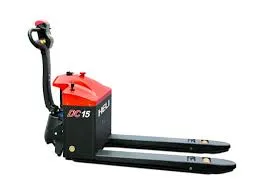


Understanding Manual Chain Block Concepts and Applications
The Manual Chain Block, also known as a chain hoist or hand chain hoist, is a mechanical device that is widely used in various industries to lift and lower heavy loads. It operates on the principle of mechanical advantage, allowing users to multiply their lifting capacity while maintaining safety and efficiency. This article delves into the design, functionality, and applications of manual chain blocks, highlighting their integral role in lifting and material handling operations.
Design and Operation
The manual chain block typically consists of several key components a lifting chain, a hand chain, a gear mechanism, and a hook assembly. The lifting chain is directly connected to the load, allowing for vertical movement. Meanwhile, the hand chain is what the operator pulls to initiate lifting or lowering actions.
When the hand chain is pulled, it engages a gear mechanism that translates this manual effort into vertical movement of the lifting chain. This gear reduction system is designed to minimize the amount of effort required to lift heavy objects. Depending on the design, manual chain blocks can lift loads ranging from several hundred kilograms to several tonnes.
Safety features are critical in the design of manual chain blocks. Many models include overload protection devices that prevent damage from excessive loads, and safety hooks that secure the load during lifting operations. Regular maintenance and inspections are also crucial to ensure the reliability and safety of these devices over time.
Applications
Manual chain blocks are versatile tools found in various sectors. They are commonly used in construction sites, warehouses, manufacturing facilities, and even maritime operations. Their portability and ease of use make them an excellent choice for both temporary and permanent lifting solutions.
1. Construction In the construction industry, manual chain blocks facilitate the lifting of heavy materials such as steel girders, concrete blocks, and other structural components. Their ability to operate in areas where electric hoists may not be feasible due to power supply limitations further enhances their utility.

2. Warehousing Within warehouses, these hoists are instrumental in moving pallets, crates, and other bulk items. They streamline the process of loading and unloading goods, making inventory management more efficient.
3. Manufacturing In manufacturing plants, manual chain blocks support assembly lines and material handling operations. They assist in positioning heavy components accurately during assembly, reducing the risk of worker injury associated with manual lifting.
4. Maritime In maritime contexts, manual chain blocks are commonly used on docks and ships for loading and unloading cargo. Their ability to operate in rugged outdoor environments and their resistance to corrosion make them suitable for handling various types of cargo.
Advantages
One of the primary advantages of manual chain blocks is their simplicity and low maintenance requirements. Unlike powered hoists that rely on electrical systems, manual chain blocks can be used in remote locations without needing an electrical supply. This makes them particularly useful in outdoor or industrial settings where power options may be limited.
Moreover, the cost-effectiveness of manual chain blocks makes them a favorable choice for small to medium-sized enterprises. They represent a one-time investment with minimal ongoing operational costs, which is an essential consideration for businesses looking to manage their expenses effectively.
Conclusion
In conclusion, manual chain blocks play a crucial role in various industries by providing reliable, efficient, and safe lifting solutions. Their design allows for significant mechanical advantage while minimizing operator strain. With applications ranging from construction to warehousing and manufacturing, the utility of manual chain blocks is undeniable. As industries continue to evolve, the importance of these simple yet effective devices will remain steadfast, delivering value to businesses and enhancing workplace safety. Regular maintenance and adherence to safety guidelines will ensure that manual chain blocks continue to be a reliable partner in lifting heavy loads for years to come.



